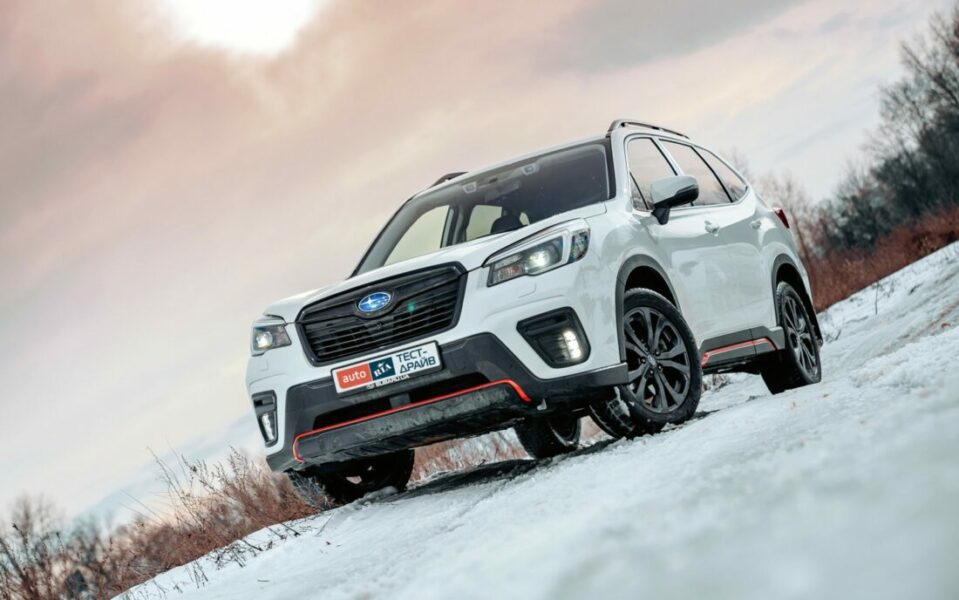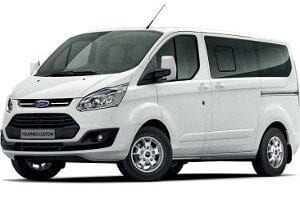
Short test: Subaru Forester 2.0 DS Lineartronic Sport Unlimited
So, perhaps unsurprisingly, driving a fresh Forester made it much easier to spot many of the previous generations of foresters still on our roads. Some of them were from the very first one that still had a gearbox and for which it seems that even 15 year olds or even older ones still do the hard work in the forest and on tracks. Or the second generation, which we remember from the more sporty versions (there was also an STI in Japan), we also have a Forester with a large deflector on the hood, with a 2,5-liter turbo boxer (okay, he also had one in the first generation, but only in the second, it took root as a kind of "macadam express" (otherwise it was the Japanese name of the predecessor Forester) and a manual transmission.The third generation became grander, even higher, more like SUVs or crossovers.
Sportiness (at least in Europe) basically said goodbye, we only talked about diesel. It's a similar story with the fourth generation, which has been on the market for two years now and is available this year in a diesel and automatic transmission combination, a model also won by the test Forester. From a worker to an athlete to a comfortable traveler who can travel in any terrain. These are changes, right? The combination of engine and transmission ensures that this Forester feels good on the highway, as well as where there is a little more acceleration and braking. The Lineartronic transmission is actually a continuously variable transmission, but since customers are concerned about the classic operation of such a transmission, where the revs rise and fall depending on how hard the accelerator pedal is pressed, and not on speed, Subaru simply “fixed” individual gears and in fact the Forester is controlled from this gearbox is the same as with the dual clutch gearbox.
The 147bhp diesel isn't very powerful in terms of size and weight (the 180bhp version will be more decisive), but it's powerful enough that you won't feel undernourished in the Forester. The same is with sound insulation (not at the highest level, but quite good) and consumption (seven liters per standard circle is quite acceptable). The Sport Unlimited branding is the richest package, including navigation and infotainment with touchscreen, leather, heated seats and X-mode.
The latter provides more reliable driving on various terrains or surfaces, and the driver can select the mode by pressing a button next to the gear lever. For less experienced drivers this will come in handy, while more experienced drivers can rely on the accelerator pedal, steering wheel action, and the overall very efficient four-wheel drive (which, of course, is not surprising for Subaru). On gravel (even if it's a rough grade) it can be fun. It would be nice if all the displays were of a more modern variety (the gauges and screens at the top of the dashboard somehow didn't match the much more modern center LCD), and it would be even better if there was more longitudinal movement in the driver's seat. so that drivers with a diagonal of 190 inches or more sit comfortably. This is why not everyone will have such a Forester, but Subaru has been dealing with that for a long time. They have learned to make very good niche cars, and from their point of view, this Forster is also a great product.
Seat: Dusan Lukic
Forester 2.0 DS Lineartronic Sport Unlimited (2015)
Basic data
| Sales: | Subaru Italy |
|---|---|
| Base model price: | 27.790 € |
| Test model cost: | 42.620 € |
| Power: | 108kW (147 KM) |
| Acceleration (0-100 km / h): | 11,1 with |
| Maximum speed: | 188 km / h |
| Mixed flow ECE: | 6,1l / 100km |
Costs (per year)
Technical information
| engine: | 4-cylinder - 4-stroke - boxer - turbodiesel - displacement 1.998 cm3 - maximum power 108 kW (147 hp) at 3.600 rpm - maximum torque 350 Nm at 1.600–2.400 rpm. |
|---|---|
| Energy transfer: | the engine drives all four wheels - continuously variable automatic transmission - tires 225/55 R 18 V (Bridgestone Dueler H / L). |
| Capacity: | 188 km/h top speed - 0-100 km/h acceleration in 9,9 s - fuel consumption (ECE) 7,3/5,4/6,1 l/100 km, CO2 emissions 158 g/km. |
| Mass: | empty vehicle 1.570 kg - permissible gross weight 2.080 kg. |
| External dimensions: | length 4.595 mm – width 1.795 mm – height 1.735 mm – wheelbase 2.640 mm – trunk 505–1.592 60 l – fuel tank XNUMX l. |
Our measurements
| T = 27 ° C / p = 1.012 mbar / rel. vl. = 76% / odometer status: 4.479 km | |
| Acceleration 0-100km: | 11,1s |
|---|---|
| 402m from the city: | 17,9 years ( 126 km / h) |
| Flexibility 50-90km / h: | Measurement is not possible with this type of gearbox. S |
| Maximum speed: | 188km / h (Gear lever in position D) |
| test consumption: | 9,1 l / 100km |
| Fuel consumption according to the standard scheme: | 7,0 l / 100km |
| Braking distance at 100 km / h: | 40,2m |
| AM table: | 40m |
evaluation
The Subaru Forester can be an excellent choice for many, even though such as our test car costs over 42 thousand rubles. If you only knew what you need it for.
We praise and reproach
too short front seats
there are no modern assistance systems

